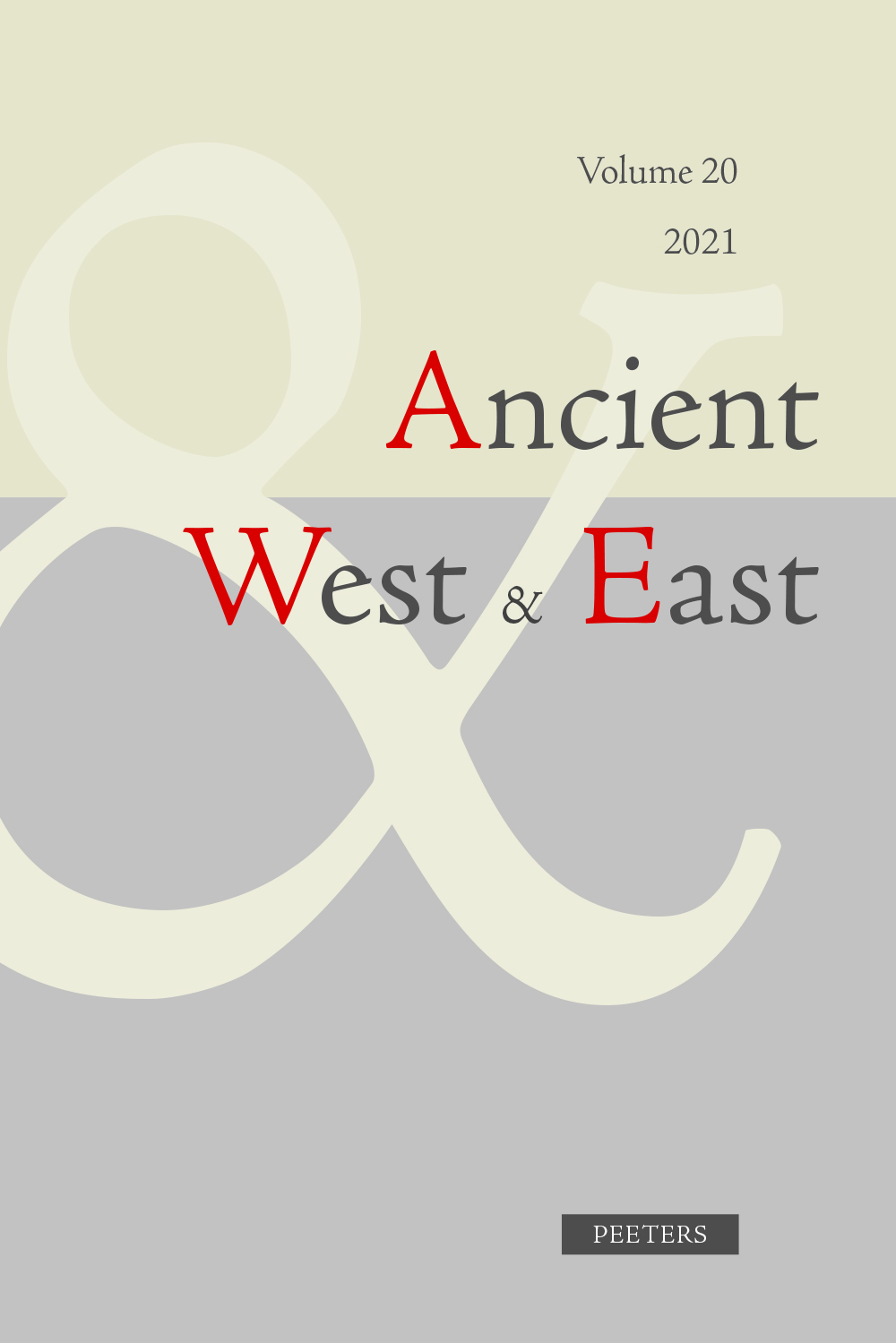next article in this issue  |

Preview first page |
Document Details : Title: The Luwian Hieroglyphic Inscription on the Stele from Karahöyük-Elbistan Author(s): WOUDHUIZEN, F.C. Journal: Ancient West & East Volume: 2 Issue: 2 Date: 2003 Pages: 211-224 DOI: 10.2143/AWE.2.2.3291950 Abstract : The Luwian hieroglyphic inscription on a stele from Karahöyük-Elbistan presents us information on the period just after the fall of the Hittite Empire - a period so dark that according to some scholars it does not exist! It mentions an otherwise unknown great king of Karkamis, Aritesup, who is likely to be identified as a forebear of Initesup, the king of Karkamis recorded by the annals of the Assyrian great king Tiglathpileser I (ca. 1115-1070 BC). Considering the fact that the names of the members of the royal family at Karkamis in the latest phase of the Late Bronze Age are frequently characterised by the Hurritic onomastic element -tesup (Initesup, Talmitesup, Kuzitesup), it lies at hand to assume that it continued to rule after the fall of the Hittite Empire. This continuity also characterises the script of our hieroglyphic text, which basically adheres to Late Bronze Age scribal traditions. In fact, the break in scribal traditions, which we would expect to coincide with the fall of the Hittite Empire, occurs simultaneously with the replacement of the old royal house at Karkamis by a new one in the 10th century BC. |
|


